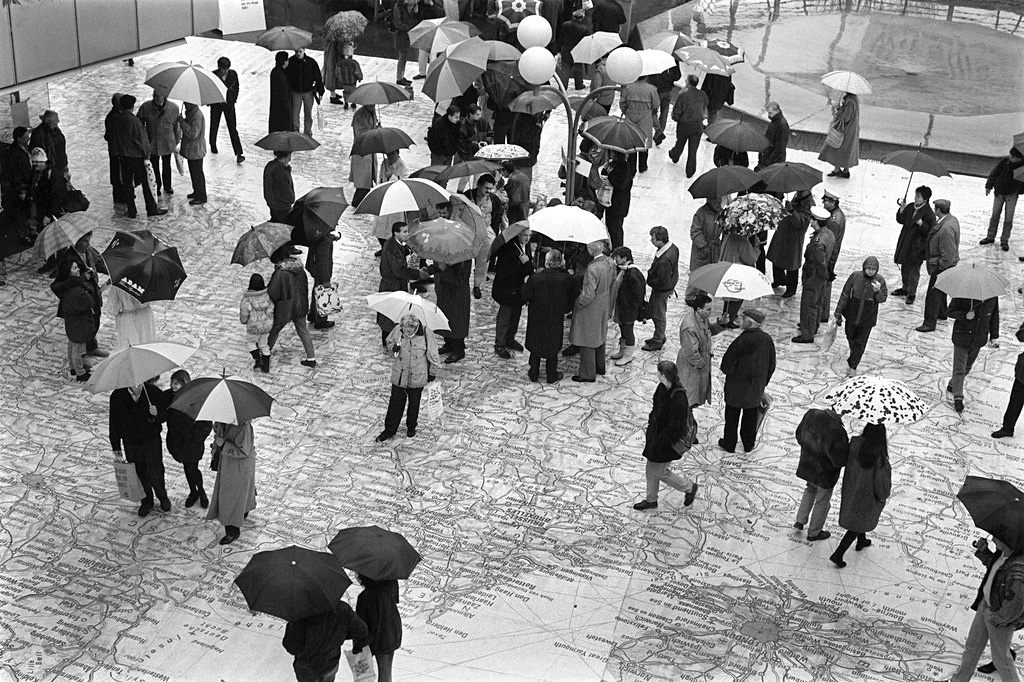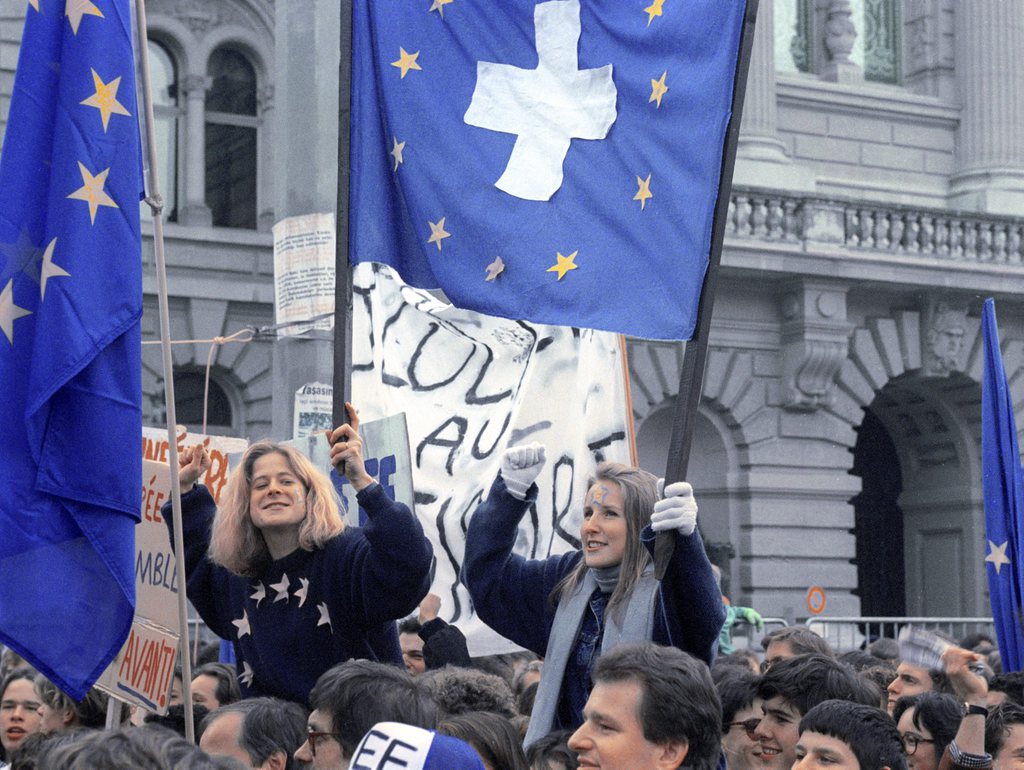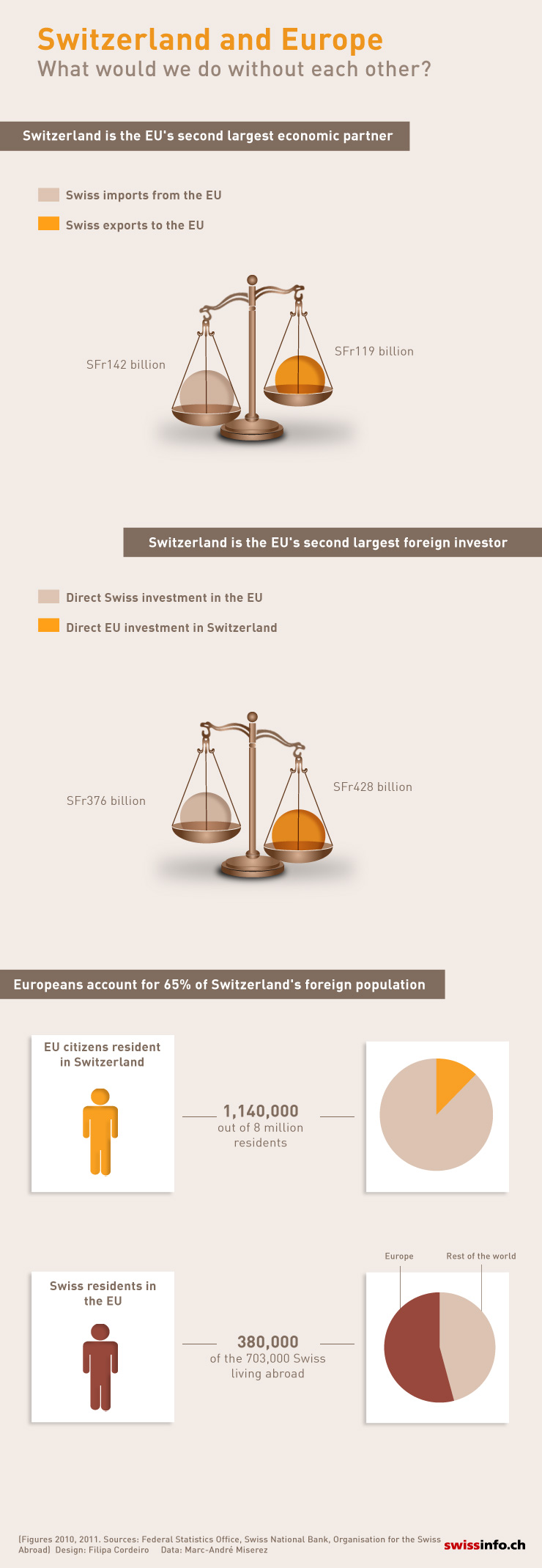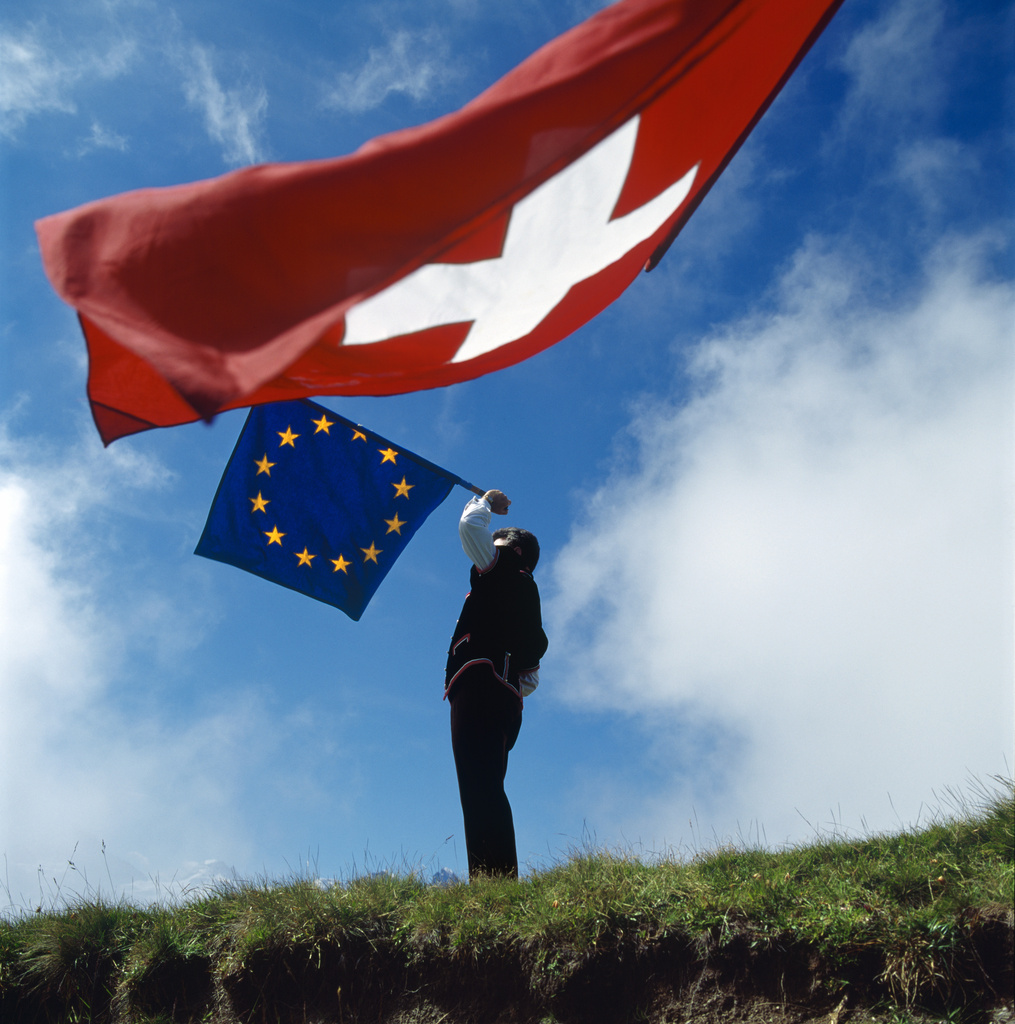Switzerland poised to keep EU at arm’s length

Twenty years ago, the country was divided over joining the European Economic Area (EEA). Today the outcome would be different, experts say. Considering Switzerland’s close ties with the European Union, it makes for a complicated relationship.
Swiss voters came out in droves on December 6, 1992. In a country where voters are called to the polls four times per year, and participation rates are rarely more than half, turnout was historically high at 78.7 per cent. By putting the ratification of the EEA agreement to the people, the cabinet was seeking legitimacy through widespread participation.
The government got the participation it was looking for, but not the outcome. In the end, 50.3 per cent of Swiss voters said no to joining. Economics Minister Jean-Pascal Delamuraz famously called it a “black day” as the dream of a good part of the political class was crushed by some 20,000 votes.
A recent survey by the gfs.bern polling institute for Swiss Broadcasting Corporation showed there is a strong feeling of eurosceptism in the country. swissinfo.ch spoke to three experts on Switzerland-EU relations who all say that if the referendum were to take place again today, the outcome would not be so close.
Plummeting interest
From the European debt crisis and a weakened euro, to borderline bankrupt member states, austerity measures, and soaring unemployment, the EU circa 2012 just isn’t what it was ten years ago. Today, the EU’s single market doesn’t have the same level of appeal for Switzerland, which has remained prosperous especially compared with its troubled neighbours.
In 1992, the situation in Europe was quite different. There was a dynamic energy and plenty of exciting opportunities, according to both Laurent Goetschel, professor at the European Institute in Basel, and Christoph Wicki, director of the Europa Forum, a Lucerne-based international platform that organises conferences with European leaders in business, academia, politics and culture.
It was in this climate of European euphoria that the cabinet explained to the public in a brochure on the EEA referendum that joining the economic area was necessary. “If we reject this agreement, it will be much more difficult to negotiate bilateral treaties in the future because we will find ourselves alone in front of an 18-country bloc,” the government warned.
At the time, the thinking was that a rejection of the agreement would undoubtedly lead to difficult economic times ahead.
Indeed, after Switzerland’s rejection of accession to the EEA, the country experienced “the longest period of economic stagnation during the second half of the 20th century”, according to the Historical Dictionary of Switzerland, an encyclopedia published by the Swiss Academy of Humanities and Social Sciences.
Additionally, the Historical Dictionary notes that during the 1990s, the country experienced real GDP growth rates that were one to two per cent lower than other western European countries, increased unemployment, a marked deterioration of the public finances and lower investment.
Today, it’s another story. Bern and Brussels have agreed on a series of bilateral accords covering just about all of the most important trade areas. In November 2008, the State Secretariat for Economic Affairs (Seco) positively assessed the bilateral approach. According to Seco, “the Free Movement of Persons [accord] alone allowed sustainable GDP growth of at least one per cent”.
A bilateral approach
“Until now, the bilateral accords have allowed us to address the most important issues. And it’s an approach that suits Switzerland well,” said Wicki. “Switzerland is a bit like someone who lives with the same partner their whole life without ever getting married,” adds Goetschel.
“The country’s strong economic, social and political situation compared with the rest of Europe has strengthened Switzerland’s tendency to keep to itself,” said René Schwok, a political scientist at Geneva University. “The more Switzerland strengthens its EU ties through bilateral accords, the less likely the prospect of entry becomes,” he added.
In 1992, critics of the EEA said that joining was the first step on a path that would lead to EU membership.
No one would say that today, according to the three Switzerland-EU experts. “We see that Norway, for example, has a positive situation as a member of the EEA without any major pressure to become part of the EU. It’s a similar situation in Liechtenstein, of course,” said Wicki.
“Even if the cabinet suggested joining the EEA again, it would emphasise that it would not be part of a larger effort to join the EU. On the contrary, it would say that it’s the best way to guarantee a lasting bilateral approach,” said Goetschel.
No impasse
Regardless, all three experts agree that the possibility of a new EEA referendum is not on the cards.
“For the European Commission, there are no moves toward asking Switzerland to join the EEA again,” said Schwock. “And Switzerland is not asking either. In any case, it’s not a political possibility. The [rightwing] Swiss People’s Party [whose popularity has grown over the past 20 years] built its legitimacy on refusing the EEA.”
In this context, the bilateral path is the only way ahead. “For the past ten years, we’ve regularly heard that we are heading for an impasse,” said Wicki. “There are still issues which need addressing and there are possible solutions, even if we are not going to make such great strides as we did in the beginning.”
Schwock and Goetschel agree, asserting that the bilateral path is not heading toward an impasse. Perhaps, suggest Goetschel, it may be “because Brussels also has interests in mind when it comes to Switzerland”.
Bilateral treaty package I (1999) Focused on opening up markets, the free movement of people, technical barriers to trade, public markets, agriculture, air, road and rail transport, and research.
Bilateral treaty package II (2004) Covered new economic interests and extended to cooperation and political questions (internal security, asylum, environment and culture), the Schengen/Dublin Accords, savings tax, processed agricultural products, media, environment, statistics, fraud, pensions, education, and professional training.
Bilateral treaty package III Seems to have reached an impasse. On September 26, 2012, the European Commission rejected the proposal that Switzerland submitted in June to re-launch negotiations. The EU has to adopt its position on future relations with Switzerland by December 10.
European Economic Area(EEA): The European internal market includes 30 countries, comprised of the 27 members of the European Union, plus Norway, Iceland, and Liechtenstein, all three members of the European Free Trade Association (EFTA).
Four freedoms: The EU’s single market seeks to guarantee the free movement of goods, capital, services, and people. This legislation was generalised to members of the EFTA countries in exchange for consultation to the European directives relevant to the internal market.
1992: The year when the EEA agreement was made between the European Community (which was not yet known as the European Union and had only 12 members) and the EFTA countries, then seven members strong, including Finland, Sweden, Austria, Iceland, Liechtenstein, Norway, and Sweden. Since, the first three have become members of the EU.
December 6, 1992: With record voter participation of about 80%, Swiss voters narrowly refused joining the EEA, even though the government, business leaders and trade unions largely recommended it. 50.3% of voters and 18 and a half cantons (of 26) said no to the EEA. There was a clear divide in opinion between the French-speaking part of Switzerland (more than 70% of voters were in favour of joining) versus the German-speaking part of the country and Ticino (about 40% of voters).
December 13, 1992: Voters in Liechtenstein accepted the EEA agreement by 55.8%. Considering the country shared a customs and a monetary union with Switzerland, special arrangements had to be made to take into account the contradictory situation.
(Translated from French by Rachel Marusak Hermann)

In compliance with the JTI standards
More: SWI swissinfo.ch certified by the Journalism Trust Initiative




You can find an overview of ongoing debates with our journalists here. Please join us!
If you want to start a conversation about a topic raised in this article or want to report factual errors, email us at english@swissinfo.ch.